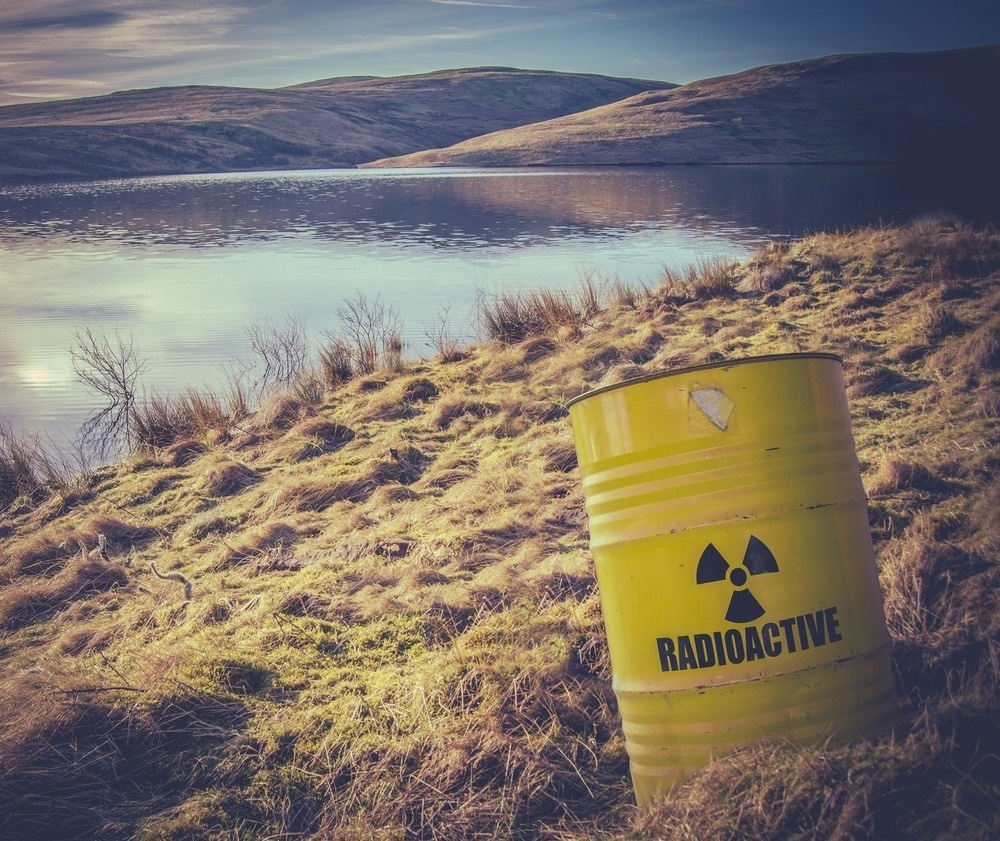Discover how graphene, a remarkable 2D material with unique properties, could revolutionize uranium remediation efforts. From its exceptional sorption capabilities to recent research breakthroughs, learn about the advantages, case studies, challenges, and future directions in utilizing graphene-based solutions for uranium contamination.
Image Credit: Mr Doomits/Shutterstock.com
Importance of Graphene in Remediation
Graphene is composed of a single layer of carbon atoms arranged in a hexagonal lattice and has exceptional mechanical, electrical, and thermal properties due to a high surface area, chemical stability, and reactivity. These properties make graphene an exciting candidate for applications like environmental remediation.
For instance, graphene-based materials with chemical modifications have been used by researchers to remove several pollutants like Cr(VI), As(III and V), Co(II), Hg(II), Pb(II), and organic pollutants from different solutions.3
Advantages of Graphene in Uranium Sorption
Uranium is a radioactive element that can infiltrate the ecosystem by mining, usage, and production, contaminating soil and water and poses a significant environmental threat if not treated properly. Researchers have been exploring various uranium remediation methods to tackle this hazard. With advancements in material science and nanotechnology, graphene has become a very useful material in this regard due to its unique properties. 1
In uranium remediation, graphene’s large surface area-to-volume ratio provides unique advantages for affective sorption and removing uranium ions from contaminated environments since it provides sufficient active sites.
The chemical stability of graphene ensures durability in harsh environmental conditions of prolonged exposure to uranium-contaminated media.3
Another advantage of using graphene for uranium remediation is that its surface can be modified with various functional groups, which allows researchers to tailor its chemical properties for specific remediation applications. For instance, graphene oxide (GO) exhibits diverse functional groups on its surface and edges, including hydroxyl, epoxy, carboxyl, and carbonyl groups, that contribute to its characteristics, such as excellent dispersion, hydrophilicity, and compatibility.
The functional groups present on GO’s surface serve as active adsorption sites for environmental pollutants, including uranium and other radioactive species found in wastewater.4
Research Case Studies
MXene/Graphene Oxide in Uranium Wastewater Treatment
In a 2022 study, researchers have advanced uranium remediation through a novel graphene-based solution. They utilized MXene/graphene oxide nanocomposites (MGN) to effectively remove U(VI) from wastewater utilizing MGN’s micro-wrinkle structure with a large specific surface area.
MGN-2 exhibited an exceptional U(VI) adsorption capacity of 1003.5 mg•g-1 with a short equilibrium time of one hour and a high adsorption efficiency even after eight cycles. The adsorption mechanism involved reduction-induced immobilization and complexation of U(VI).
This study highlights MGN-2 as a promising adsorbent for U(VI) removal, offering potential for wastewater treatment. Additionally, the preparation method presents a new avenue for developing high-efficiency U(VI) adsorbents, contributing to advancements in uranium pollution mitigation.2

Image Credit: vlastas/Shutterstock.com
Efficient Uranium Adsorption with 3D rGO/ZIF-67 Aerogel
Another study focuses on a novel adsorbent, the rGO/ZIF-67 aerogel, created by the in-situ assembly of zeolitic imidazolate framework-67 (ZIF-67) on reduced graphene oxide (rGO) hydrogel.
The researchers described the adsorption process using the pseudo-second-order kinetic model and the Langmuir isothermal model, with the composite material exhibiting an excellent adsorption capacity of 1888.55 mg/g. The study has also found that the temperature rise favors the adsorption process, demonstrating its feasibility under varying conditions.
The rGO/ZIF-67 aerogel, with its 3D porous network structure, offers a promising solution for efficient uranium removal, addressing concerns related to radioactive elements discharged into water bodies in the context of nuclear industry development.6
Magnetic Graphene Composite for Uranium Remediation
Researchers introduced a groundbreaking solution for uranium remediation by developing a novel magnetic composite, graphene oxide/Fe3O4/glucose-COOH (GO/Fe3O4/GC), in a 2021 study published in Scientific Reports. This composite was efficiently synthesized from glucose using hydrothermal carbonization and its combination with graphene oxide (GO).
The adsorption experiments demonstrated outstanding uranium adsorption performance and rapid solid–liquid separation from aqueous solutions. GO/Fe3O4/GC surpassed the capabilities of glucose-COOH (GC) and magnetic GC (MGC), with a maximum adsorption capacity of 390.70 mg g−1.
The study emphasized the strategic use of hydrothermal carbonization in biomass modification and the incorporation of graphene oxide for enhanced adsorption efficiency. This magnetic composite offers a cost-effective, high-efficiency, and rapidly separable solution for uranium removal, showcasing significant potential for water purification applications.5
Challenges and Future Directions
The abundant use of uranium has consequences that create long-term environmental hazards and health challenges to human beings and bioorganisms.3 Although using graphene-based uranium remediation is a great option, it still faces some challenges like scalability and reusability.
Researchers need to develop cost-effective and scalable graphene synthesis methods to make graphene’s+ application in uranium remediation economically viable. Moreover, due to its novelty, the long-term behavior of graphene-based materials in complex environmental matrices is not fully understood. Therefore, future research should focus on long-term benefits, investigating potential interactions with other substances present in soil or water to ensure the stability and effectiveness of these graphene-based remediation strategies over time.
How is Nanotechnology Used in Soil Remediation?
References and Further Reading
- Jabbar, A. A., Hussain, D. H., Latif, K. H., Albukhaty, S., Jasim, A. K., Sulaiman, G. M., & Abomughaid, M. M. (2024). Extremely efficient aerogels of graphene oxide/graphene oxide nanoribbons/sodium alginate for uranium removal from wastewater solution. Scientific Reports. https://doi.org/10.1038/s41598-024-52043-1
- Li, K., Xiong, T., Liao, J., Lei, Y., Zhang, Y., & Zhu, W. (2022). Design of MXene/graphene oxide nanocomposites with micro-wrinkle structure for efficient separating of uranium (VI) from wastewater. Chemical Engineering Journal. https://doi.org/10.1016/j.cej.2021.134449
- Li, Z., Chen, F., Yuan, L., Liu, Y., Zhao, Y., Chai, Z., & Shi, W. (2012). Uranium (VI) adsorption on graphene oxide nanosheets from aqueous solutions. Chemical engineering journal. https://doi.org/10.1016/j.cej.2012.09.030
- Liu, H., & Mao, Y. (2021). Graphene oxide-based nanomaterials for uranium adsorptive uptake. ES Materials & Manufacturing. http://dx.doi.org/10.30919/esmm5f453
- Yang, A., Wang, Z., & Zhu, Y. (2021). Facile preparation and highly efficient sorption of magnetic composite graphene oxide/Fe3O4/GC for uranium removal. Scientific Reports. https://doi.org/10.1038/s41598-021-86768-0
- Zhao, M., Tesfay Reda, A., & Zhang, D. (2020). Reduced graphene oxide/ZIF-67 aerogel composite material for uranium adsorption in aqueous solutions. ACS omega. https://doi.org/10.1021/acsomega.0c00089


